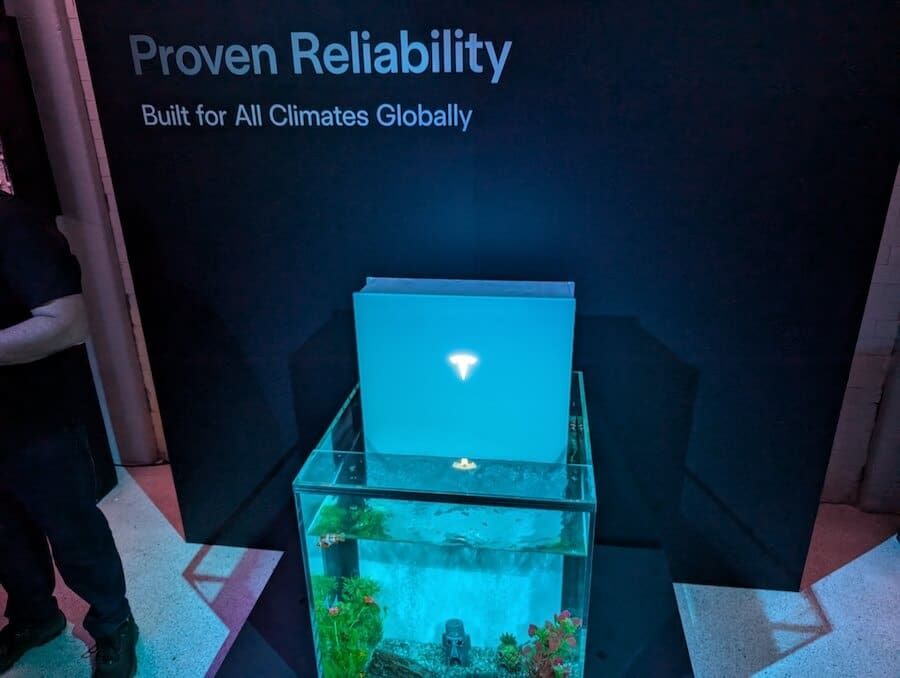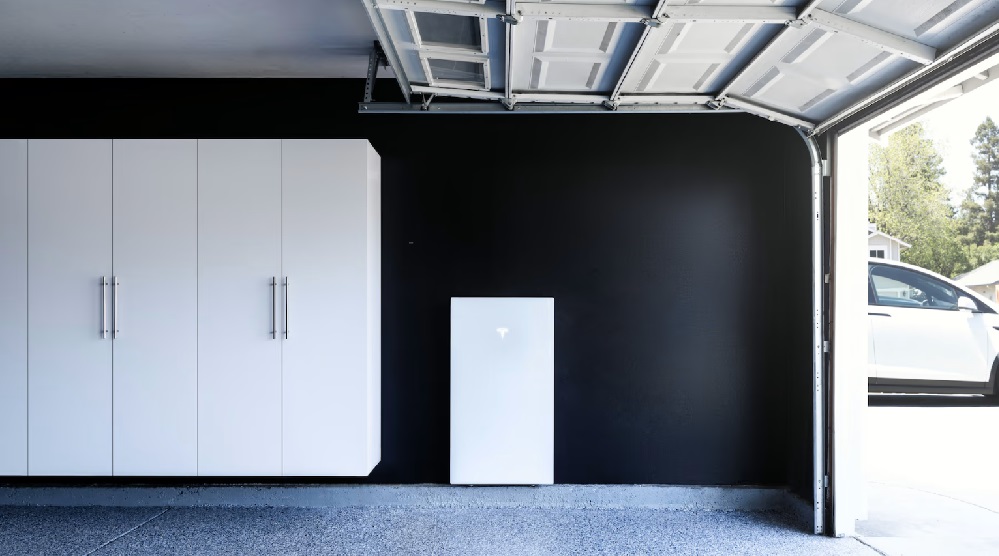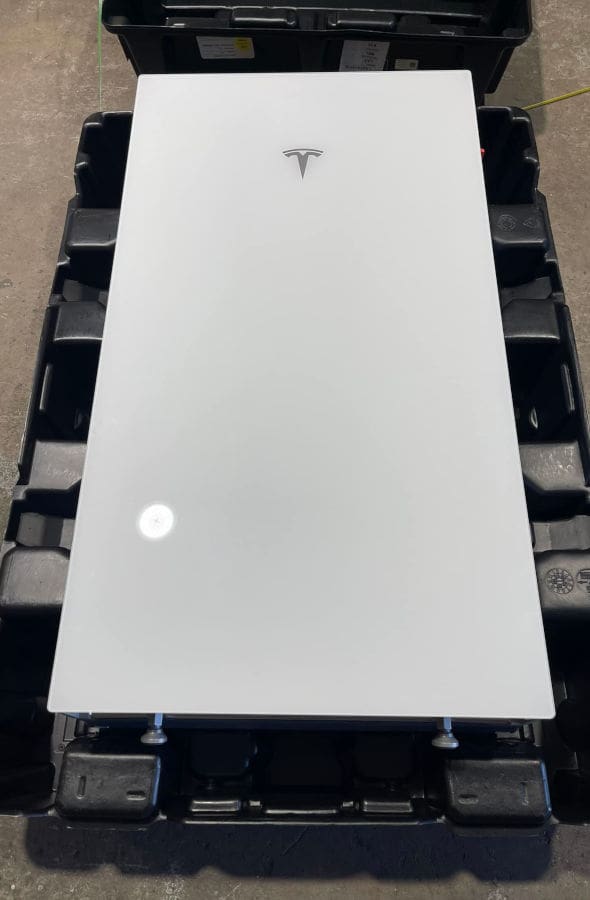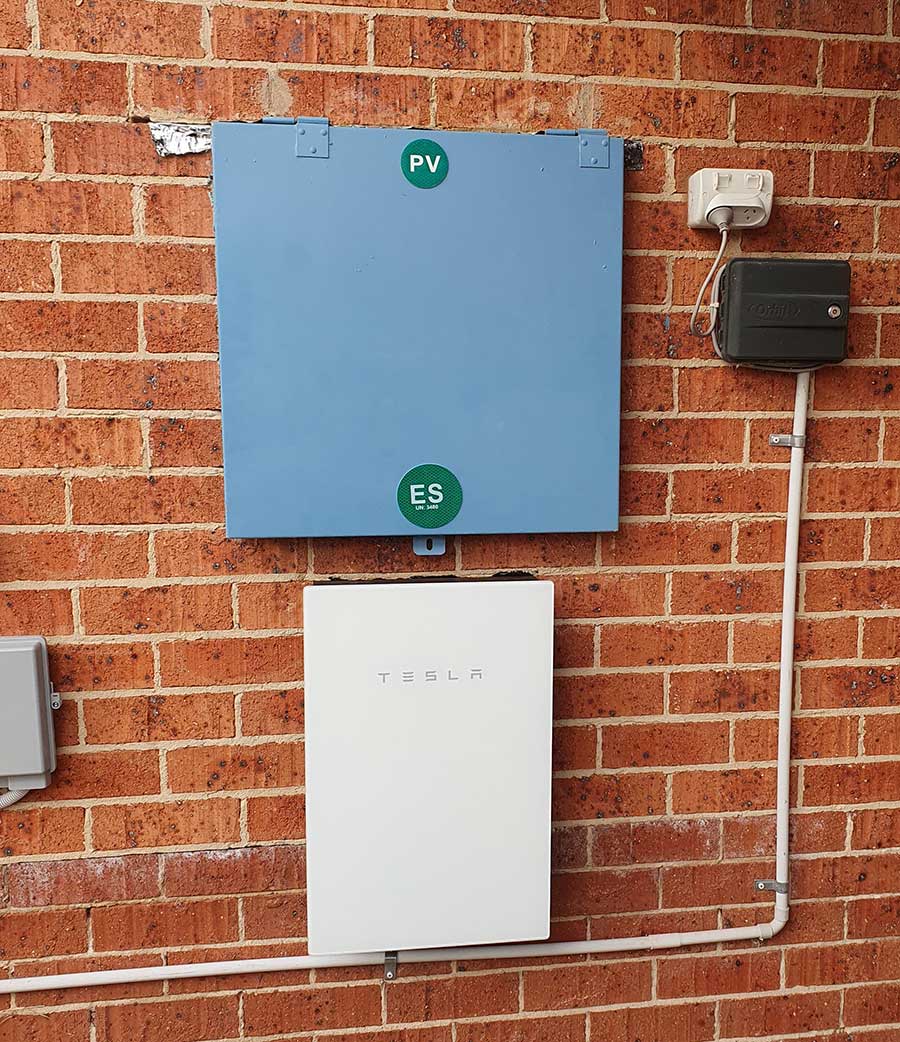

Finn's Tesla Powerwall 3 Review & Verdict
Finn Peacock has been a Chartered Electrical Engineer since 1998, and is ex-CSIRO
With the Powerwall 3, Tesla has taken a different approach to their tried-and-tested Powerwall 2 home battery. While the Powerwall 2 was AC-coupled and could be used with any existing solar system, the Powerwall 3 contains its own solar inverter that can accept up to 20 kilowatts of solar panels, making it an all-in-one DC-coupled battery.
Usable storage capacity hasn't changed from the Powerwall 2 and is 13.5 kilowatt-hours, but it can provide twice the power - or at least it can outside of WA. It can be used to provide backup power to an entire home and is able to charge from solar during blackouts.
It uses the same monitoring app as the Powerwall 2, which is a good thing, as it's excellent.
Tesla has a good track record of providing reliable batteries and their customer service is excellent. This makes the Powerwall 3 a good – but not cheap – choice for those looking to have both solar and a battery installed.
Tesla Powerwall 3: Pros & Cons
- Tesla has been producing lithium home batteries longer than almost every other company.
- High continuous power output of 10kW (5kW in WA)
- Up to 20kW of solar panel capacity
- Dry contact available for basic energy management like hot water
- Flood resistant
- Relatively compact
- Excellent monitoring app with notification for dynamic export limits
- “Opticaster” software available for energy management
- Good customer service
- Tesla makes quality batteries but they’re not low cost
- It can be noisy
- 5kW charging may curb the ability to use time-limited tariffs
- 5kW rated units do not have 10kW backup capacity
- Not suitable for off-grid use
- Elon Musk
About Tesla Powerwall 3
The Powerwall 3 is Tesla's latest home battery. It's able to supply more power than its predecessors and contains a built-in solar inverter. This makes it an all-in-one system that solar panels can be directly connected to.
Important features are:
- 13.5 kilowatt-hours (kWh) of usable energy storage
- 10 kilowatts (kW) of continuous output power (5kW in WA)
- 5 kilowatts (kW) charging rate
- Accepts up to 20kW of solar panels
- Operating temperature of -20 to 50 degrees
- Suitable for indoor or outdoor installation
- Flood resistant
- Can charge from solar during a blackout and potentially supply backup power for days or weeks.
- Cooling fans can get noisy enough to be annoying
The Powerwall 3 is one of the many batteries able to take advantage of the federal battery rebate.
Not Compatible With Powerwall 2
If you have a Powerwall 2, it's not possible to add a Powerwall 3, as the units can't communicate with each other and this can result in one battery interfering with the functioning of the other. It is possible Tesla will make the Powerwall 3 backwards compatible in the future.
If this incompatibility issue makes you want to get another Powerwall 2 instead, you're out of luck, as they're no longer available. They are sometimes installed as warranty replacements, but you'll have a hard time finding a new one for sale. They're also no longer on the CEC approved batteries list and so can't receive the federal battery rebate.
13.5kWh Energy Storage
The Powerwall 3 has 13.5kWh of usable storage. If that's not enough, up to four can be installed for 54kWh of storage. That will also give up to 40kW of power, and up to 80kW of solar panel capacity.
Battery capacity can also be increased by adding Expansion Units. These are the same size and have the same storage capacity as a Powerwall 3 but don't contain a hybrid inverter. They are designed to be installed behind a Powerwall 3. One Powerwall 3 can accept up to 3 Expansion Units, but if you have multiple Powerwall 3s, only one can accept Expansion Units.
So with one Powerwall 3, up to three Expansion Units could be added for a maximum of 54kWh of storage. Three more Powerwalls could be added to that for a maximum of 94.5kWh for a household installation. But for most homes, one Powerwall 3, with potentially one Expansion Unit, will provide adequate storage.
Because they don't contain an inverter, Expansion Units don't change the charge or discharge rate. Despite not having an inverter, they are only around $500 cheaper than a Powerwall 3.
10kW Continuous Power
The Powerwall 3 has had its power output increased over the Powerwall 2. While technically capable of providing 11kW of continuous power, in Australia, it will be limited to 10kW or 5kW in Western Australia because of their grid connection requirements.
If a Powerwall 3 was discharged at a full 10kW then the 13.5kWh storage capacity of a fully charged new Powerwall 3 would be completely drained in just 1 hour and 21 minutes. But for most homes, 13.5kWh is plenty to get through the average evening.
5kW Charging Power
While it can supply up to 10kW of continuous power, the Powerwall 3's battery storage can only charge at a maximum rate of 5kW. But if output is high enough, it can charge its storage at 5kW while also supplying up to 10kW of power to your home and/or the grid. So even if you have a lot of solar panel capacity, little or no solar power is likely to go to waste, provided the battery storage needs charging.
Because the Powerwall 3 is technically capable of charging at more than 5kW, it's possible Tesla will increase the charge rate in the future.
20kW Solar Capacity
The hybrid solar inverter in the Powerwall 3 can accept up to 20kW of solar panels. It also has three Maximum Power Point Trackers (MPPTs), which make it easy to install panels facing three different directions. If you want your panels facing more than three directions, that's possible, but you'll have to talk to your installer about your options.
When a battery is installed with solar, the system can exceed the normal oversizing limit for solar panel capacity and still receive the STCs that are part of the “solar rebate.” So, installing solar panel capacity that’s more than one-third larger than the Powerwall 3’s inverter capacity is not a problem. I recommend getting as close to 20kW of panels as possible to help keep the battery charged in the middle of winter and periods of bad weather.
Can Be AC Coupled
The Powerwall 3 is designed to be DC coupled, with the home's solar panels directly connected to it. This is easy to do if solar is installed along with the battery. But if you have an existing solar system, the Powerwall 3 can be AC coupled and used without connecting solar panels to it, provided your current solar inverter capacity is 5kW or less per Powerwall 3. However, some larger inverters can be used if they are specifically configured to ramp down during a grid outage.
Another option is to disconnect your old inverter and connect your current solar panels to a Powerwall 3. This won't affect the Powerwall warranty, but may be technically difficult, as rewiring of the existing array may be uneconomical and unless you're using the same installer, they're unlikely to want to touch a legacy system.
Operating Temperature
The Powerwall 3’s operating temperature ranges from -20 to 50°C. Unlike some batteries, it can charge and discharge when the temperature is below zero. Your circumstances would have to be exceptional for the lower limit to be a problem in Australia, while the upper limit is also good for most homes, as no capital has hit 50°C so far. But the Powerwall 3 can derate and reduce its maximum power output when the temperature is over 40°C. The same can happen when the temperature is very low.
Installation Location
Indoor or outdoor installation is fine for the Powerwall 3. The lowest Ingress Protection rating of any part of a Powerwall 3 install is IP55 so it’s resistant to both dust and lashing rain. Tesla says it can be installed in direct sunlight, but I recommend shade because heat isn’t a good friend to batteries. The picture below shows it installed in a garage, but this is a Tesla promotional picture, so there's no sign of the required Gateway box, cabling, or battery warning labels.
It will need to meet Australia’s strict standards for home battery location. Its cooling fans can make enough noise to be disturbing, so this should be taken into account.
The Powerwall 3 is designed for wall mounting. Unlike the Powerwall 2, it can’t be placed directly on the ground as there’s a grate at the bottom of the unit through which it sucks air for cooling. But there are two adjustable feet to ensure there’s a large enough gap. If your wall can’t support the weight of a Powerwall 3 for some reason – such as your house being made out of straw – this will complicate your installation.
Size & Weight
The Powerwall 3 is compact and takes up considerably less space than the average equivalent modular battery. There’s also no need to find room for a separate solar inverter. It’s 111cm high, 61cm wide, and 19cm deep. If you are a precise person who wants that in millimetres with a bullet point next to it, here you go:
- 1105mm x 609mm x 193mm
But it will also be necessary to mount an additional piece of hardware called a Backup Gateway 2. This is a large box required for backup power that’s around half the height and width of the Powerwall 3 and is something that’s missing from every publicity photo on Tesla’s Australian site. This is what it looked like on the Powerwall 2:
Its millimetre measurements are:
- 660mm x 411mm x 149mm
The weight of the Powerwall 3 is 130kg. The Backup Gateway 2 is a more manageable 20.4kg.
Limited Flood Resistance & Don’t Listen To Tesla Marketing
To my surprise, the Powerwall 3 is flood resistant to 0.6m. As it’s only 1.1m tall this means it can be halfway submerged and potentially be fine. On the Tesla Australian site it says:
“It can maintain normal operation in cold temperatures, high humidity and flooding in 0.6 metres of water.”
But this is wrong. The above statement is directly contradicted by Tesla’s What to Do in Case of an Emergency page. It can’t go for a swim and keep doing its thing. If there is any chance of floodwater reaching a Powerwall 3, it should be shut down immediately and, if touched by floodwater, only reactivated after Tesla support gives the okay.
Round Trip Efficiency
The Tesla Powerwall 3 datasheet says the efficiency of its solar inverter is 97.5% but doesn’t state if this is peak or average efficiency. Either way, it’s a little less than the typical modern inverter, but not too shabby. There are additional losses from charging and discharging the battery, so the total round-trip efficiency of storing solar energy in the Powerwall 3 and then discharging it to run your home is given as 89%. This means for every kWh of stored energy that comes out, 1.12kWh need to go in. This isn’t great for a DC coupled battery, but it’s not bad.
It Can Get Noisy
The Powerwall 3 datasheet says at 1m distance it will typically produce less than 50 decibels of noise. An example of 50 decibels is a loud refrigerator or a typical air conditioner. But when the fans are working hard it can produce nearly 62 decibels. That’s louder than my handheld vacuum cleaner in eco mode. It’s loud enough to be annoying and can potentially occur whenever the battery is working, including at night, so this needs to be considered when deciding where to install it. The hotter it is, the harder the fans will work, so it will tend to be louder in summer.
Backup Power
When the grid goes down the Powerwall 3 can supply backup power at the same continuous rate it’s normally capable of. It can also charge from solar panels during a blackout, potentially allowing a home to run off backup power for days or weeks. The bad news is fully off-grid applications aren’t supported.
The Powerwall 3 is a single-phase all-in-one battery, so if your home has single-phase power it can backup your entire home if desired. But, while it’s simplest from an installation standpoint to back up the whole house, it’s not necessarily the best idea. Backup can be limited to only essential loads if desired, which can have the benefit of making your battery power last longer in an outage.
If your home has three-phase power the Powerwall 3 can also provide backup and charge from solar, but it can only backup appliances connected to the same phase it is on. Essential loads can be moved to that phase. Extra Powerwall 3s can be placed on other phases, but even if you have one on each phase, it won’t be possible to run three-phase appliances off backup power because the power delivered to the phases won't be in sync.
Starting Motors With Backup Power
When grid power isn’t available, home batteries can have a hard time starting electric motors, such as those in refrigerators or water pumps. This is because they sometimes require six or eight times more current to get started than they need for normal operation.
The Powerwall 3 can temporarily supply more power than its normal maximum continuous output of 10kW and this can be enough to get them going. Tesla says it can start heavy loads rated up to 185 amps LRA. As long as the Powerwall 3 is supplying little or no power to other devices, it should be able to start most motors that draw a continuous 6kW or less in normal use. Because they vary in how much current they need to get started, the Powerwall 3 may even be able to get some motors going that have a continuous draw of 10kW. As it's very rare for a home to have a single-phase motor that's more than a few kW, starting motors while on backup power should be no problem.
Not Suitable For Off-Grid
While it can potentially provide backup power to a single-phase home for days or even weeks, Tesla does not currently recommend the Powerwall 3 for off-grid use. Its installation manual states:
"Powerwall 3 systems must have a grid connection. Fully off-grid systems are not supported"
This overrides page 9 of the Owner's Manual which suggests it can be used off-grid.
It's possible Tesla will enable off-grid use in the future, but this was also possible for the Powerwall 2 and never happened.
It Has An App
The Powerwall 3 has a monitoring app and it’s exactly the same as the Powerwall 2’s. This might make you think you’re being fobbed off with old software, but it’s a good thing because the Tesla Mobile App is definitely one of the better ones available for home batteries.
Warranty
Provided its battery isn’t used to discharge electricity into the grid, the Powerwall 3 warranty will last a full 10 years in normal use. If it is used to send electricity into the grid – which will happen if it’s part of a VPP – then the warranty will last for either 10 years or until it has provided a total of 37,800kWh of stored energy. The warranty also promises it will retain a minimum of 70% of its original capacity.
The Powerwall 3 must be able to receive updates over the internet. If it’s not online the warranty may be reduced to four years.
The warranty requires you to follow the owner’s manual which states:
“The owner is responsible for ensuring the Powerwall system is operational; this can be confirmed by the white LED on the front of Powerwall 3, or in the Tesla mobile app.”
If the battery is not operational for an extended time it can be ruined. According to Tesla, if enough time passes without you noticing it’s not working, then the warranty doesn’t apply.
You are also protected by Australian Consumer Guarantees and these can apply even after the written warranty has ended.
Price
The Powerwall 3 battery costs $11,200 but requires a $1,950 'Backup Gateway 2', so you'll be paying $13,150. But note the Powerwall 3 comes with a built in hybrid solar inverter that would cost over $2,000 if you had to buy it separately. Some good news is, if you get more than one Powerwall 3, up to four of them can share a single Gateway.
Expansion Units aren't much cheaper than Powerwall 3s, and cost around $10,700.
Installation can add several thousand dollars to the total.
Powerwall 3s can receive the federal battery rebate and this will lower the price by over $4,000 for each Powerwall 3 or Expansion Unit installed.
Installer Approved
In our Installers' Choice Awards, for four years running, the Powerwall 2 was responsible for Tesla taking 1st place in the Money's No Object category for home batteries. In the 2024 Installers’ Choice Awards, it also took 2nd place in the Best Value Battery category and 1st place in Best Battery Support category.
In the 2025 Installers' Choice Awards we asked installers one question, "If installing a system on your own house today, which brand's batteries would you use?" Tesla took 1st place in a tie with Sungrow batteries. While the Powerwall 2 would be mostly responsible for that win, the Powerwall 3 still would have influenced the outcome and deserves some credit.
Our Recommendation
While the Powerwall 2 was not a perfect battery and has had a major recall, overall it performed better than average compared to batteries installed in the same time frame. So far, the Powerwall 3 has had few issues, but we'll need more time to be certain it's reliable. But given the performance of the Powerwall 2 relative to other batteries and given the lack of problems with the Powerwall 3 so far, based solely on its technical aspects, it's a battery we can recommend using. This is not a recommendation to purchase a Tesla product. That decision is on your shoulders.
Tesla has 2 solar batteries in our database
Filter by:
Tesla Powerwall 3 Reviews (245)
Show Most Relevant reviews from All time
- 5 star 229
- 4 star 12
- 3 star 3
- 2 star 0
- 1 star 1
View Timeline
30 October 2025
17 December 2025
24 November 2025
12 November 2025
02 November 2025
29 October 2025
10 October 2025
01 October 2025
09 September 2025




































































































.png)










Batteries
1 × Tesla Powerwall 3 with a 11040W Inverter
1 × Tesla Powerwall 3 (Slave battery)